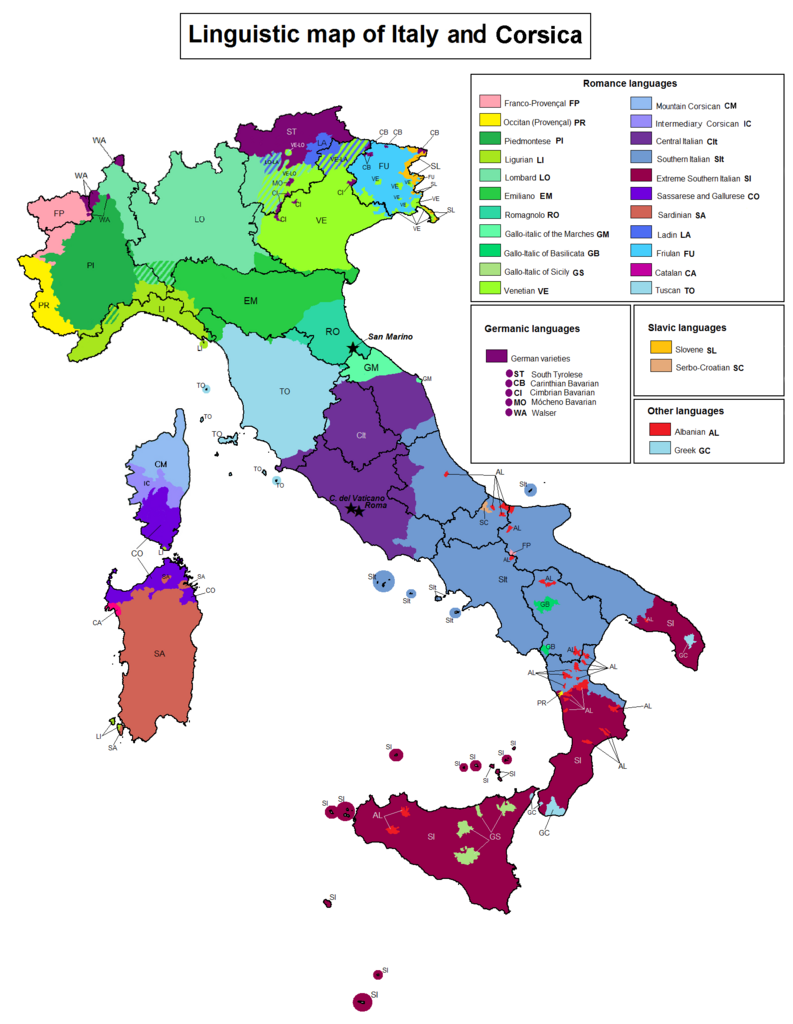(Editor’s note: This is Pt. 1 of two parts.)
Italian is a beautiful language. It is fun to speak and listen to, and with almost every word ending in a vowel and a rhythmic way of stressing each word, it sounds very musical.

Just so you know where I’m coming from, my native language is English, but I have a Master’s degree in Italian and have gone back and forth to Italy since 1986, studying in Florence, working in Rome, and spending lots of time near Venice, too.
Although my best foreign language is Italian, along the way, I also studied Norwegian, French, German and Spanish for varying lengths of time.
What I found to be easy about Italian was pronunciation, spelling, gender of the nouns and a fair amount of vocabulary and grammar because of my previous study of French.
All of this and more – as well as what I found to be difficult – is detailed below along with specific tips and tricks you can try to speed up or enhance your learning.
WHAT’S EASY:
Pronunciation and spelling
Since Italian is a phonic language, meaning each letter has one sound most of the time, once you have mastered the pronunciation rules you will know how to pronounce virtually everything and, conversely, how to spell it. For example, an “a” is always pronounced one way (ah). Whereas English has 26 letters in its alphabet, Italian has only 21 letters, five vowels (a, e, i,o, u) and 16 consonants (b, c, d, f, g, h, l, m, n, p, q, r, s, t, v, z), which makes it simpler, and therefore easier, than English.
Additionally, you may find it interesting to know that they don’t have spelling classes in Italy like they do in English-speaking countries because they don’t need to since the language is phonic.
They actually borrowed the English word “lo spelling” (spelling) to explain the concept.
Words stress
In Italian, most words that have two syllables or more are stressed on the second to last syllable. For example, pizza, with the stress on the “pi,” and gelato, with the stress on the “la.” Some irregular ones, which you will learn as you go, exist, but two common ones that are not stressed on the second to last syllable are cinema, which is accented on the first syllable, “ci,” and medico (doctor), accented on the “me.”
Some vocabulary
If you know Latin or any other Romance language such as French, Portuguese, Romanian or Spanish, you will find similarities with Italian, which will help you understand it more easily. You will also find similarities with English and other European languages as I did.
If you are a foodie or have studied music, you will recognize a lot of Italian words, such as linguini, zucchini, aperitivo as well as forte, allegro, staccato, piano, etc. Since 30 percent of English vocabulary comes from French, that will help you, too. Think of the word pensive (Romance root), and it won’t be hard to remember the Italian word pensare (to think), which is like French (penser), Portuguese (pensar), and Spanish (pensar).
Some grammar
What I found to be easy about Italian grammar were things that were similar to French, as well as the ease of discovering the gender of most nouns, making adverbs from adjectives, and learning some prepositions.
Gender: O, A, E and masculine and feminine singular nouns
In Italian, all nouns are either masculine or feminine. Most nouns that end in “o” are masculine singular (panino, vino), and most nouns that end in “a” are feminine singular (pizza, birra). If a masculine noun ends in “o” in the singular, it will end in “i” in the plural (panini, vini); if a feminine noun ends in “a” in the singular, it will end in “e” in the plural (pizze, birre).
Nouns that end in “e” in the singular can be either masculine as in fiore (flower) or feminine as in creazione (creation), which means you will need to memorize them. If a noun ends in an “e” in the singular, it will end in “i” in the plural (fiori, creazioni). Knowing if a word is masculine or feminine will be key in deciding what article to use, what form of the adjective to use, etc., so be sure to memorize the gender of each noun.
(There is no neuter form as in German, which simplifies things.)

Adverbs
Adverbs are simple to make if you know the adjective you want to turn into an adverb.
For example: 1) rapido (quick) becomes rapidamente (quickly), 2) dolce (sweet) becomes dolcemente (sweetly), and 3) debole (weak) becomes debolmente (weakly).
You just have to remember three rules: 1) If the singular adjective ends in an “o” (rapido) or an “a” (rapida), use the feminine form (rapida) and add “- mente” for rapidamente. 2) If the singular form of the adjective ends in an “e” except for “le” and “re”, such as dolce, then you just add “- mente,” for dolcemente. 3) If the singular form of the adjective ends in “le,” or “re” such as debole or regolare (regular), then drop the “e” and add “- mente” for debolmente and regolarmente (regularly).
Alternatively, just use “con” with the noun, such as piacere (pleasure) for con piacere (with pleasure).
SOME PREPOSITIONS
Some prepositions are straightforward, such as in Italia (in Italy), da Roma (from Rome) or al teatro (at the theater), because they have a one-to-one correspondence with English, which made it easy for me, but many are not straightforward.
These are shown in the next section.
Mary Porcella tells us about the challenges of the Italian language in Pt. 2 of “Learning Italian.”
Read more from Mary here in Dispatches’ archives.
You can see more sources here for free online Italian lessons.
Mary Porcella is a Europhile who has lived in Germany, Norway, Italy, and the U.S. She is a writer, editor, and photographer. She loves seeing new places, returning to old haunts, and meeting up with family and friends. As of today, her travels have taken her to 20 European countries, and she hopes to visit the rest.















